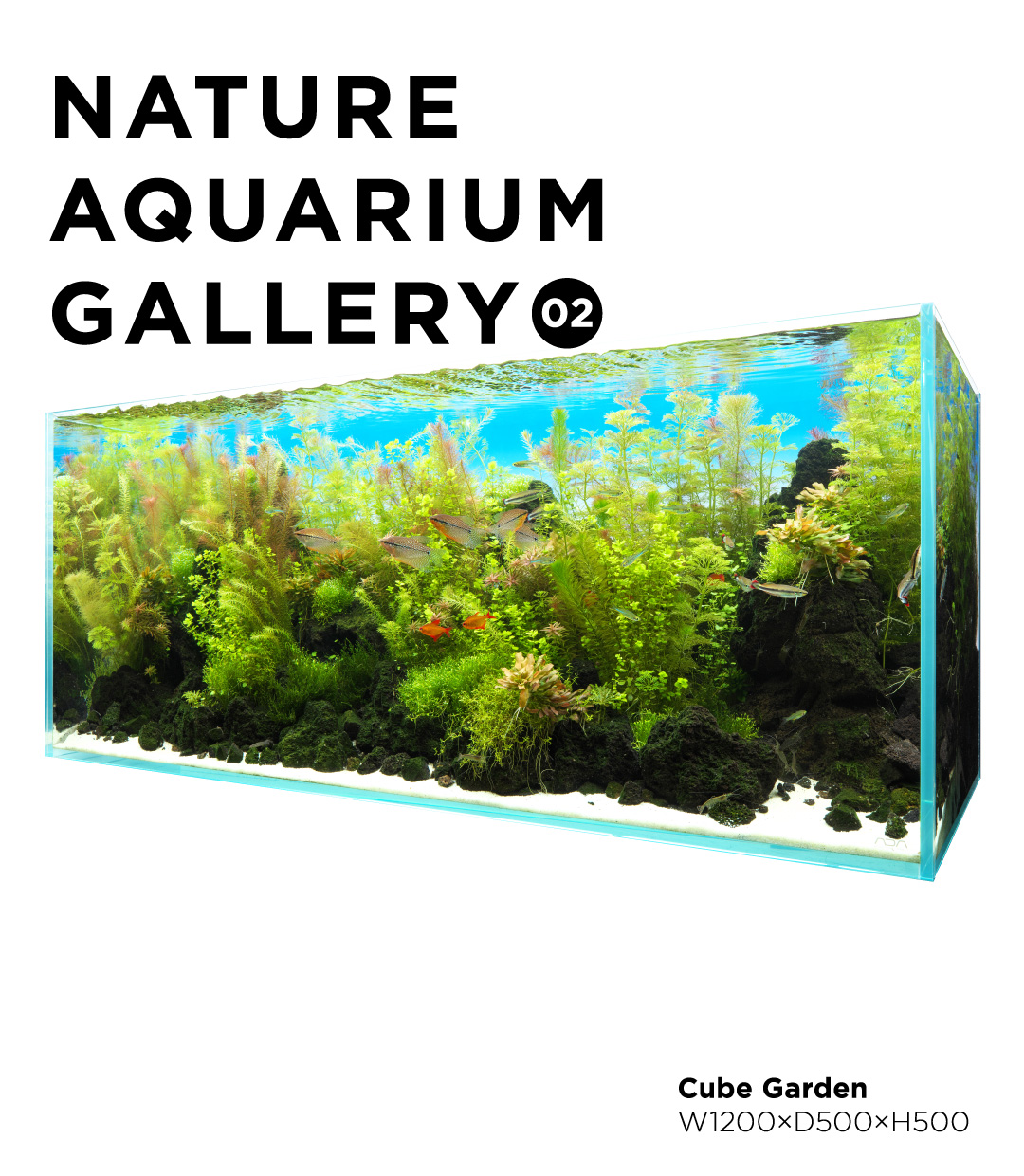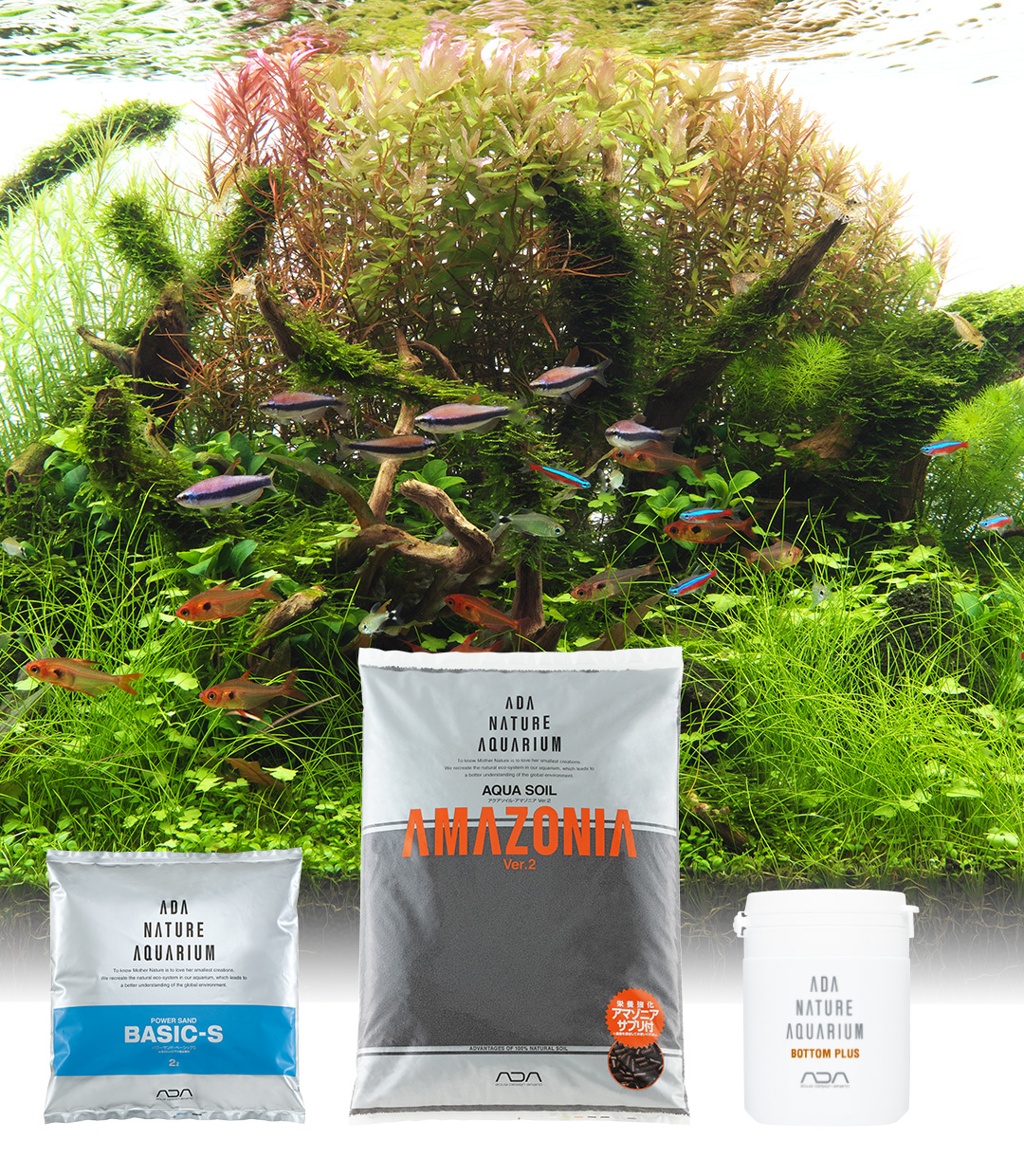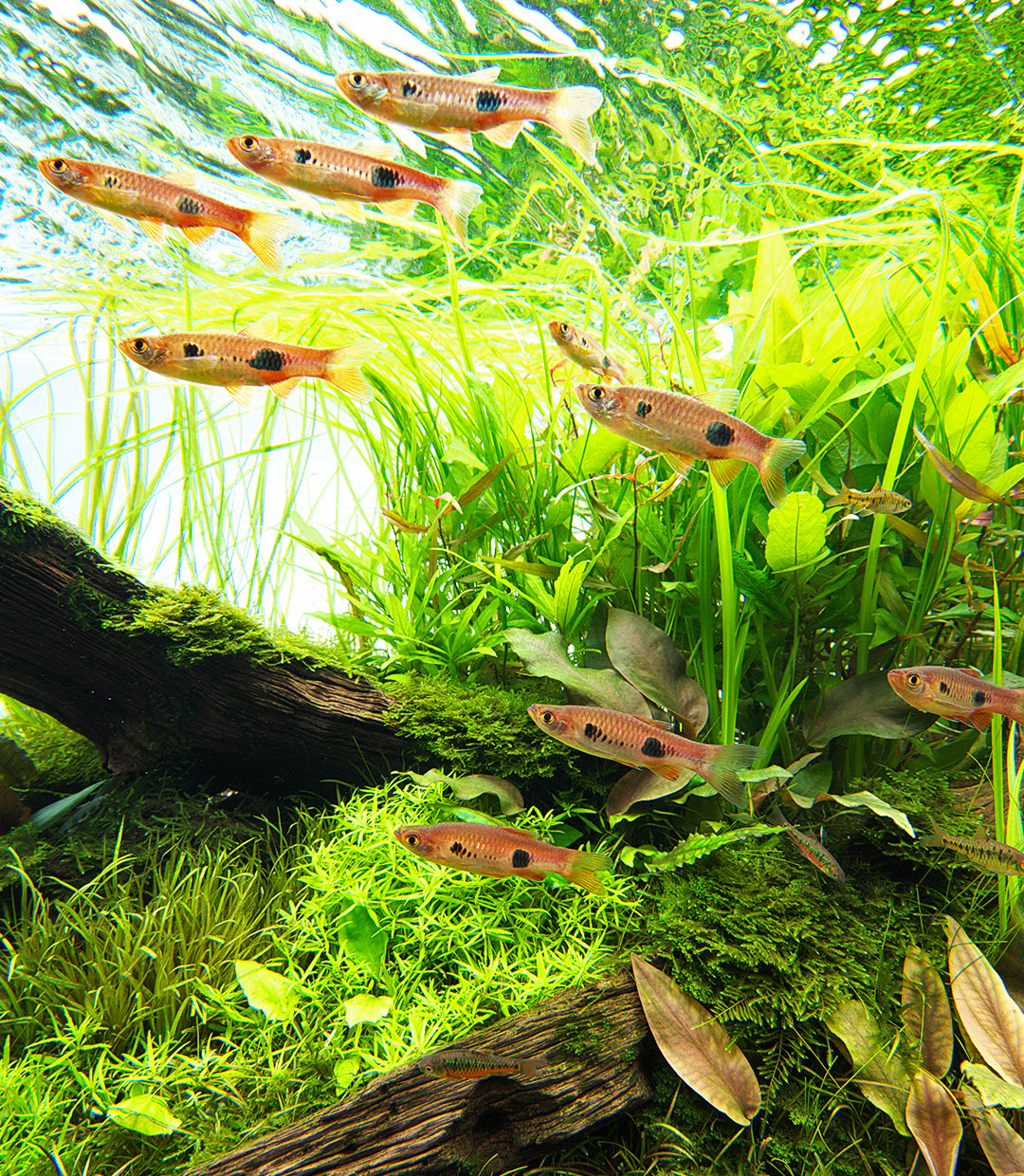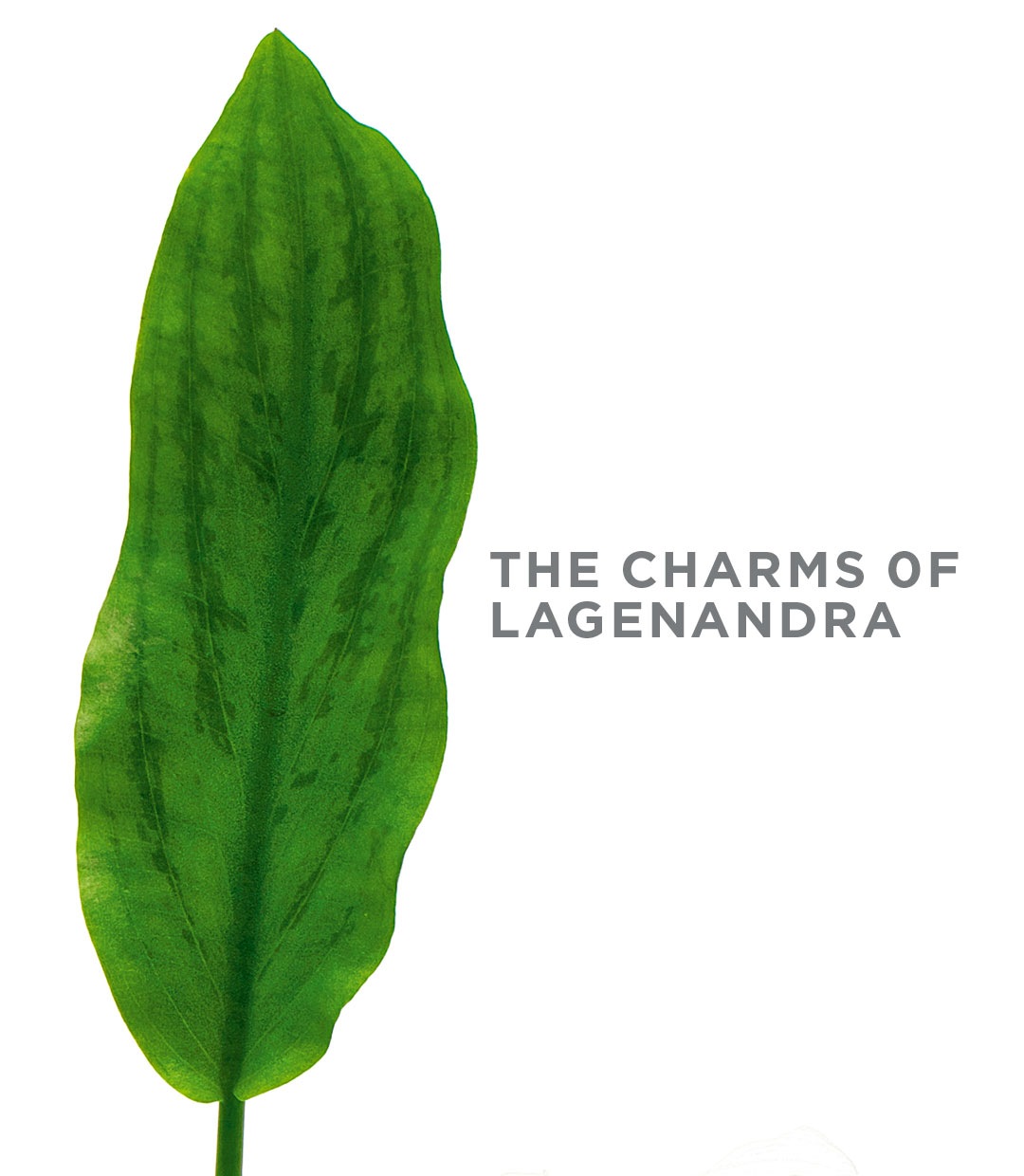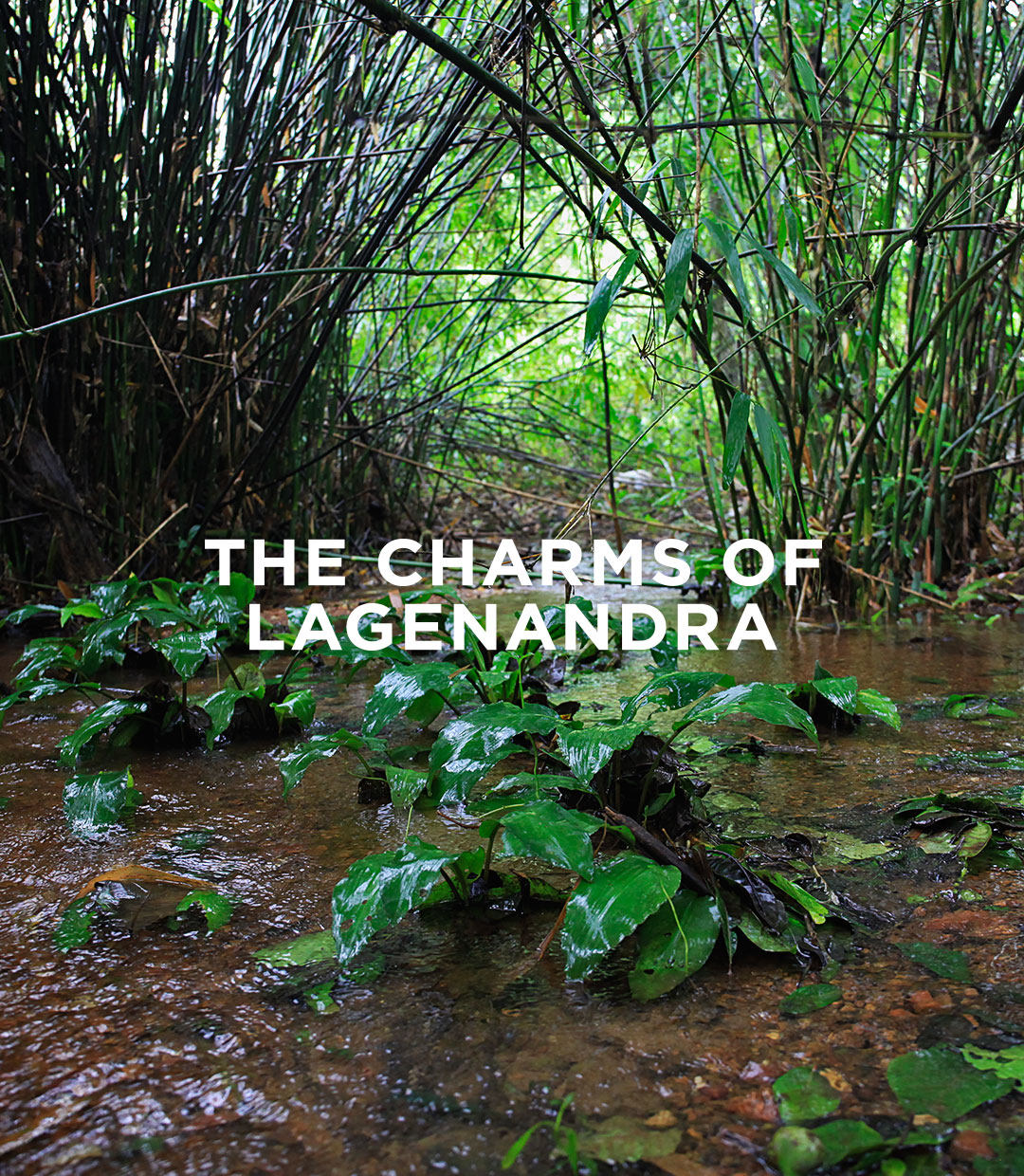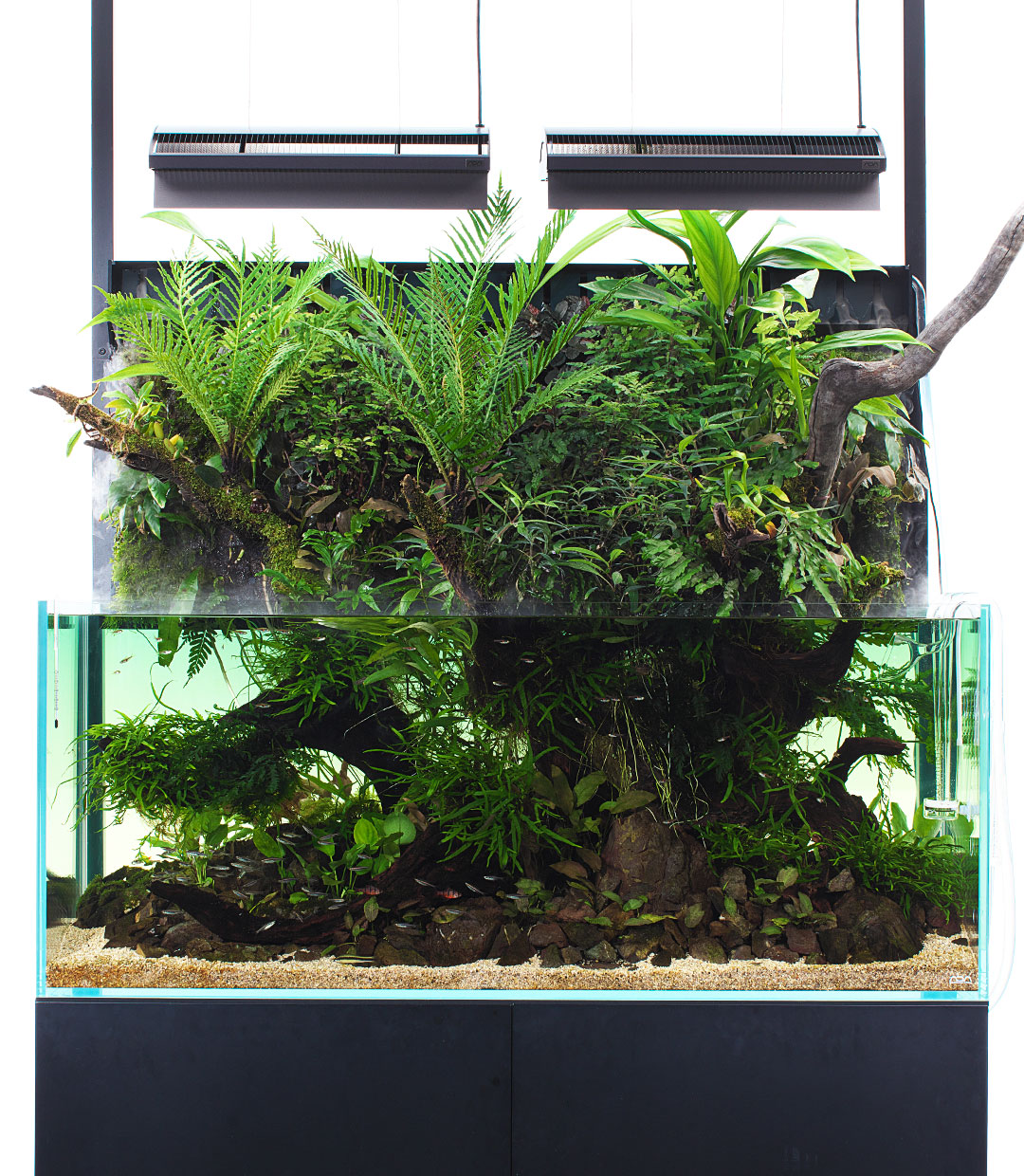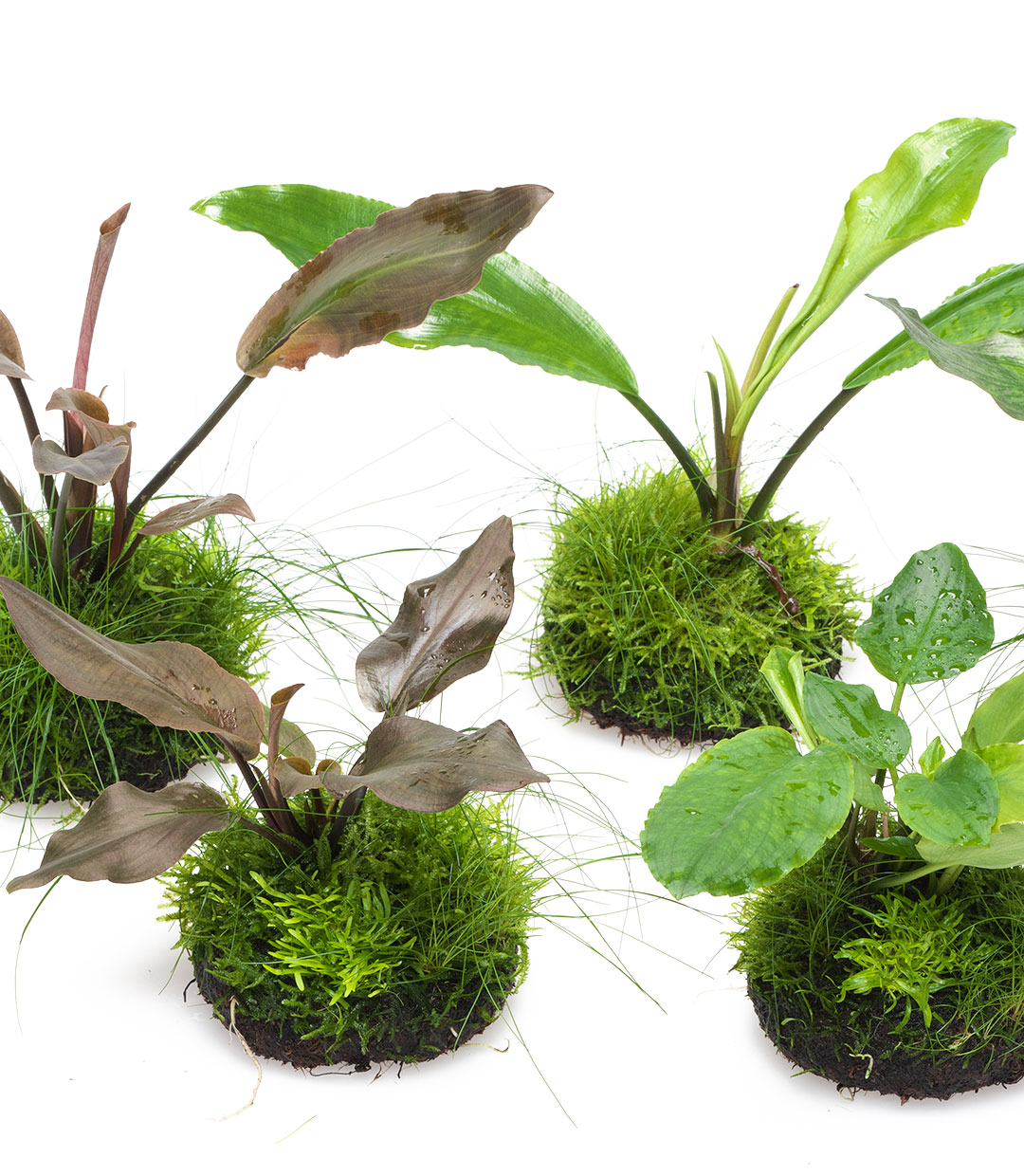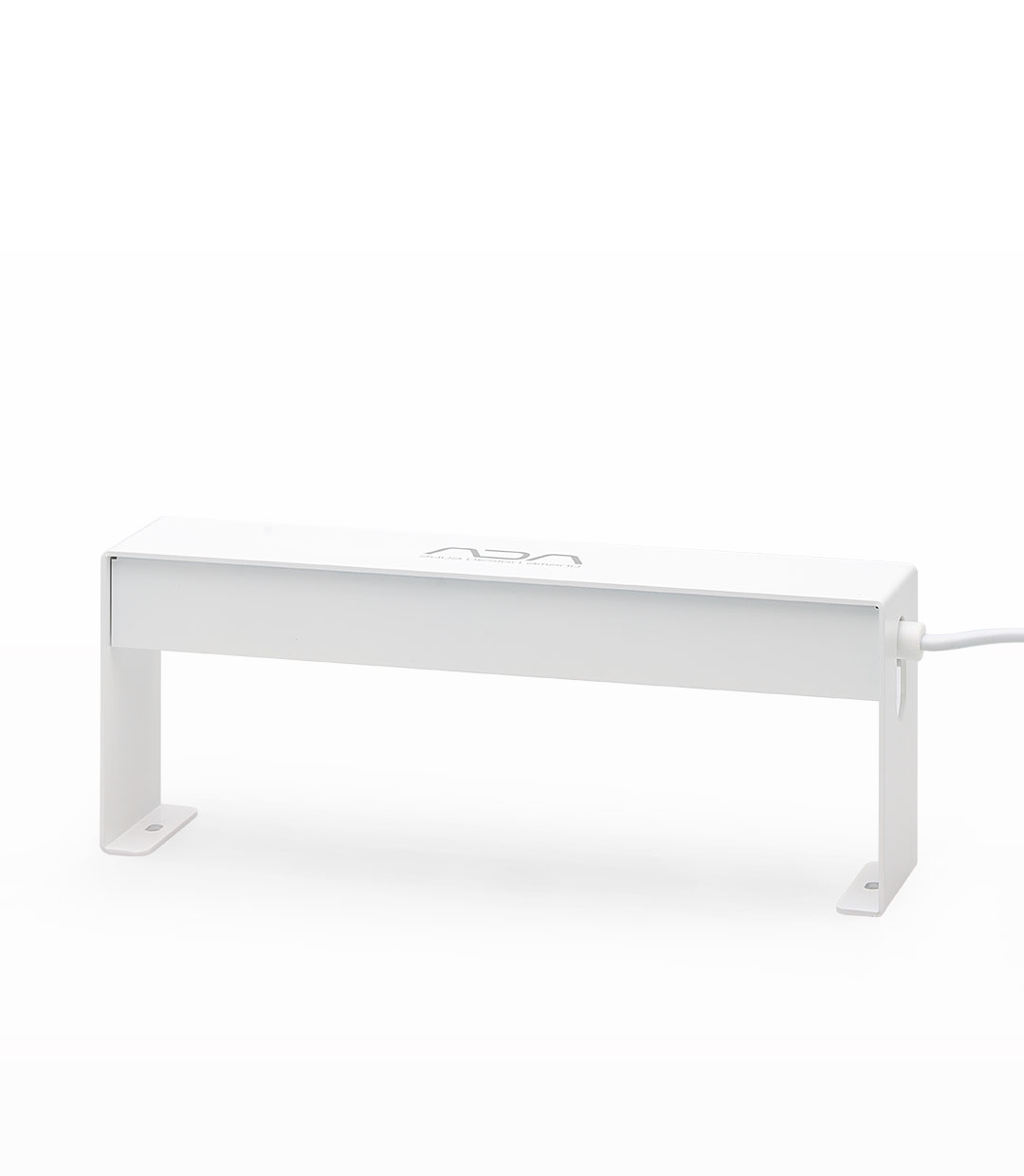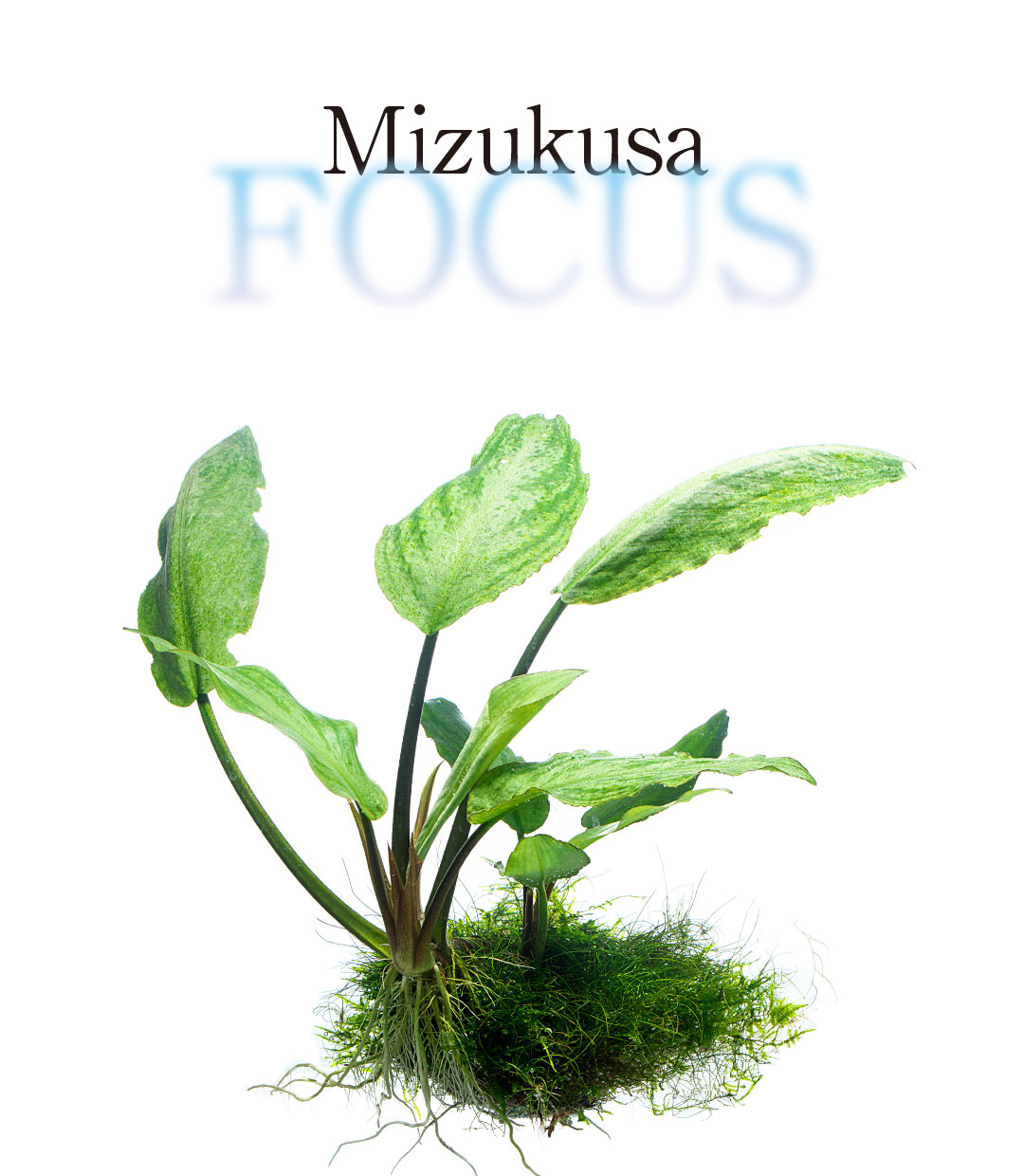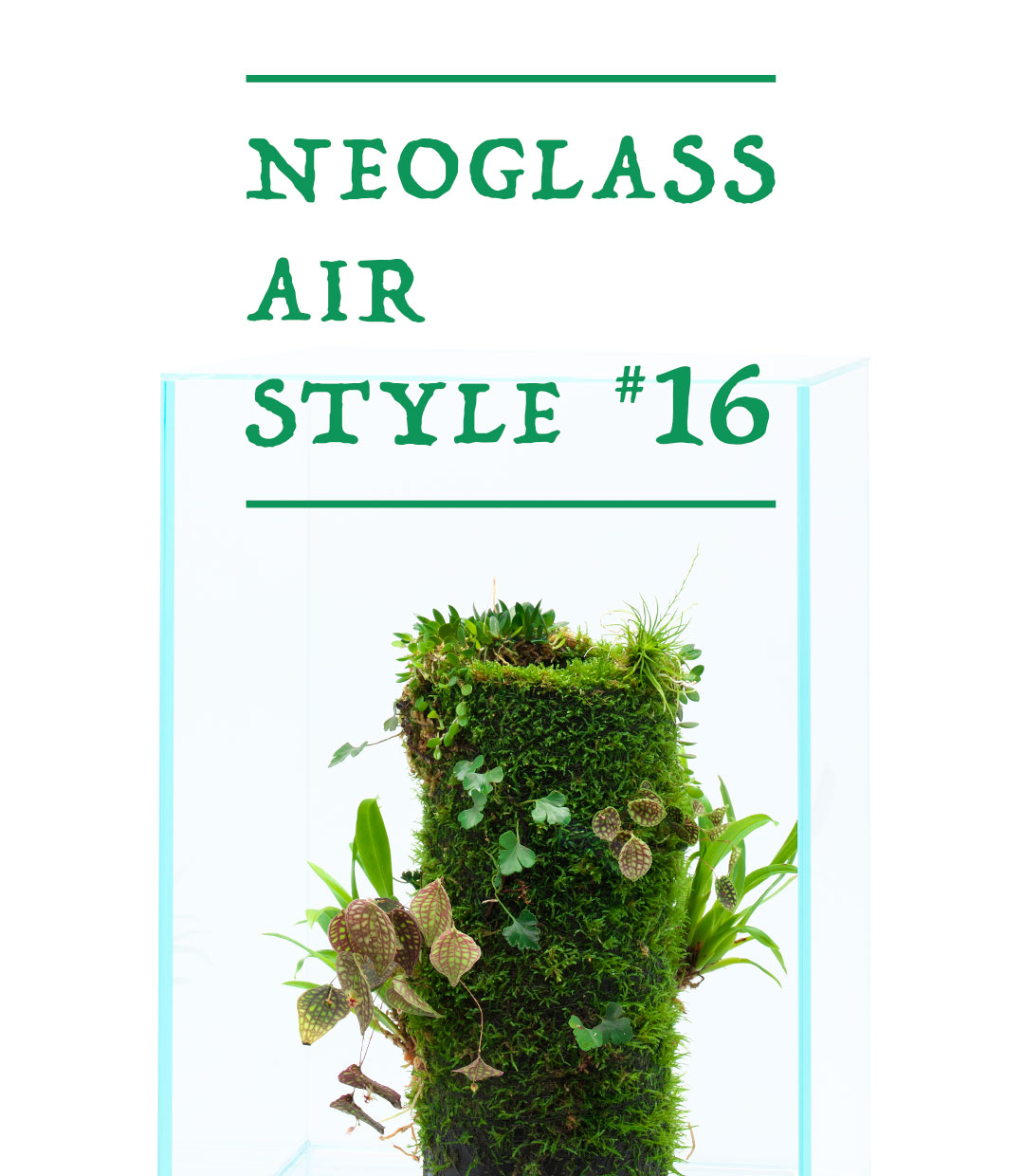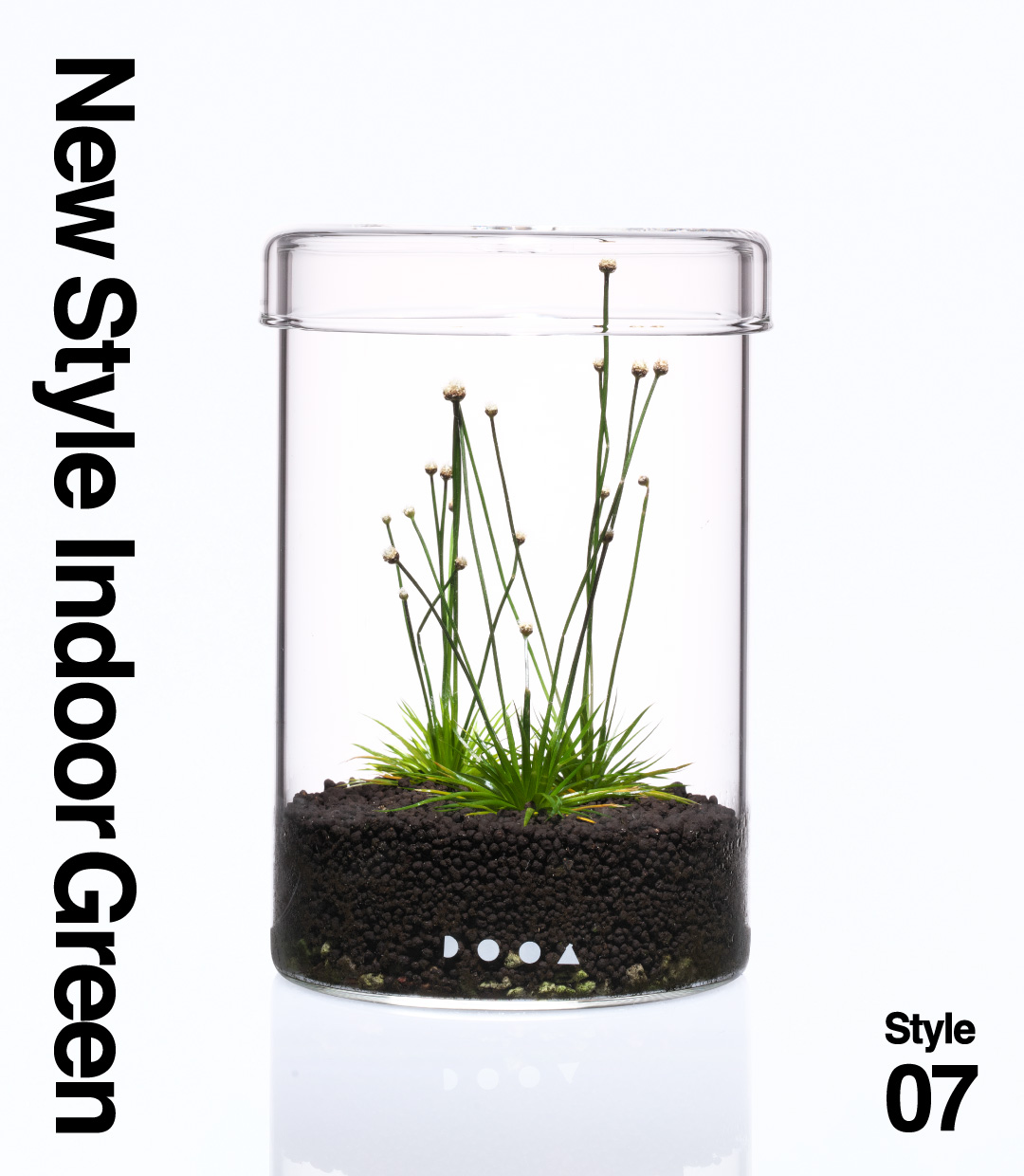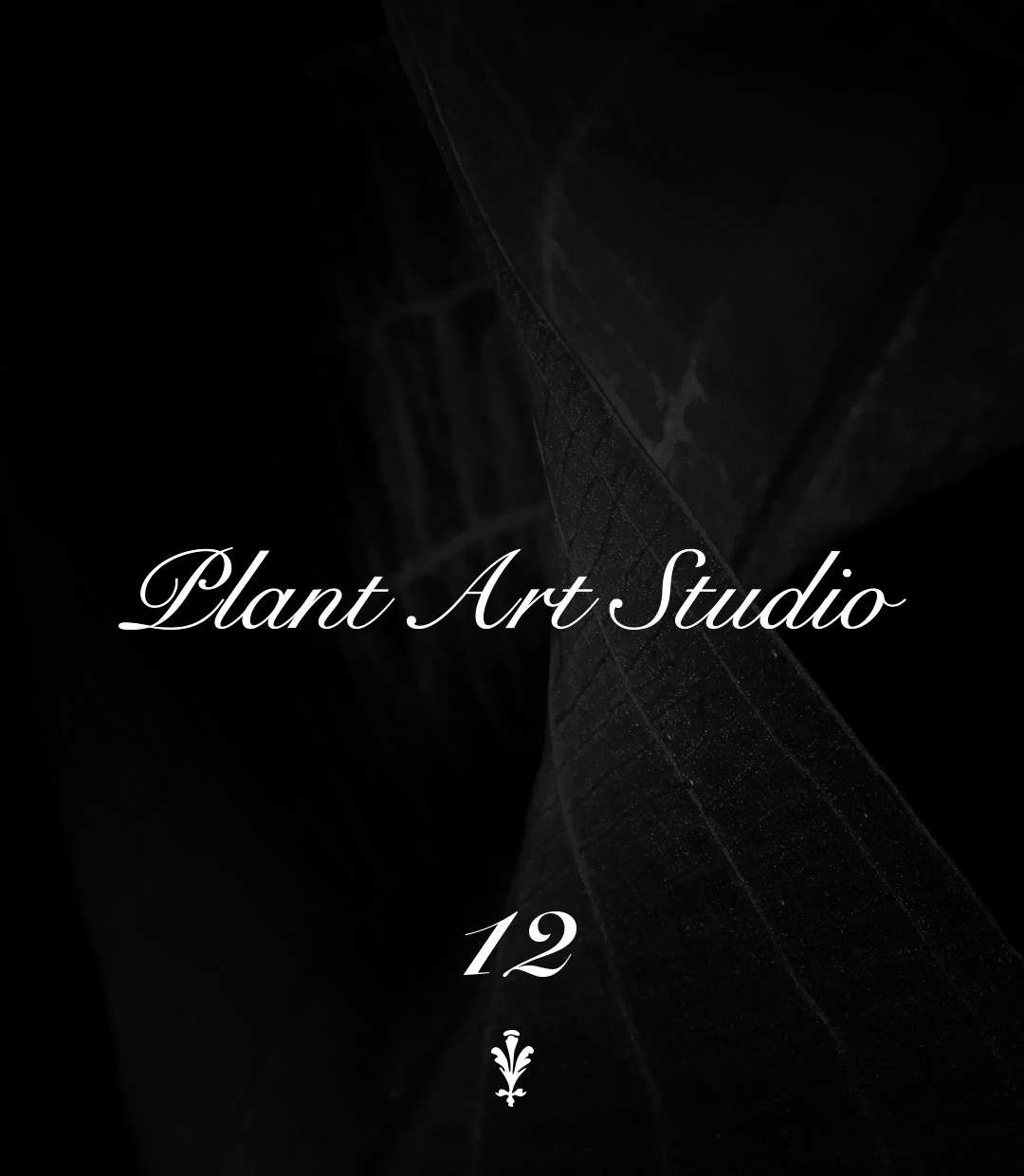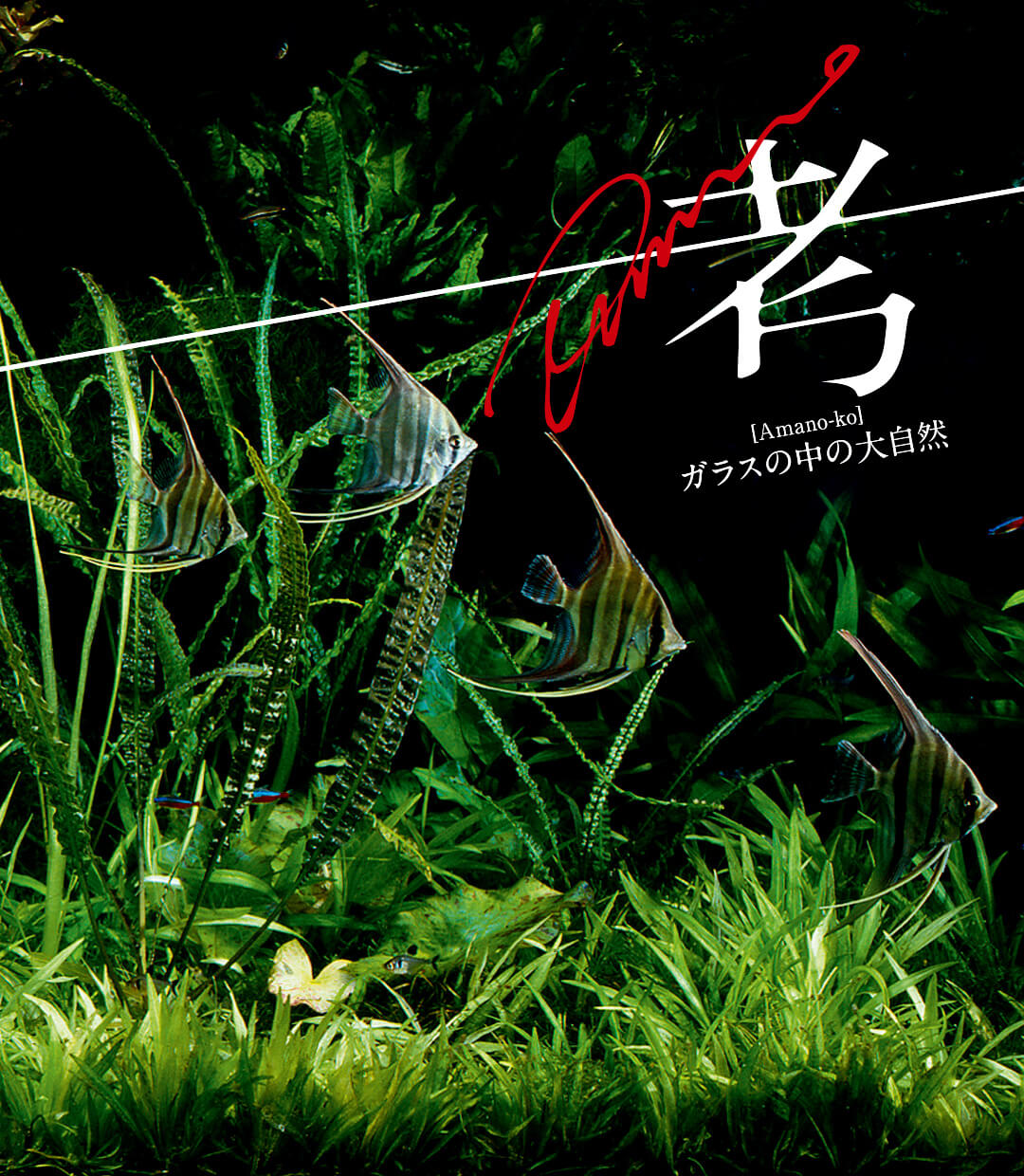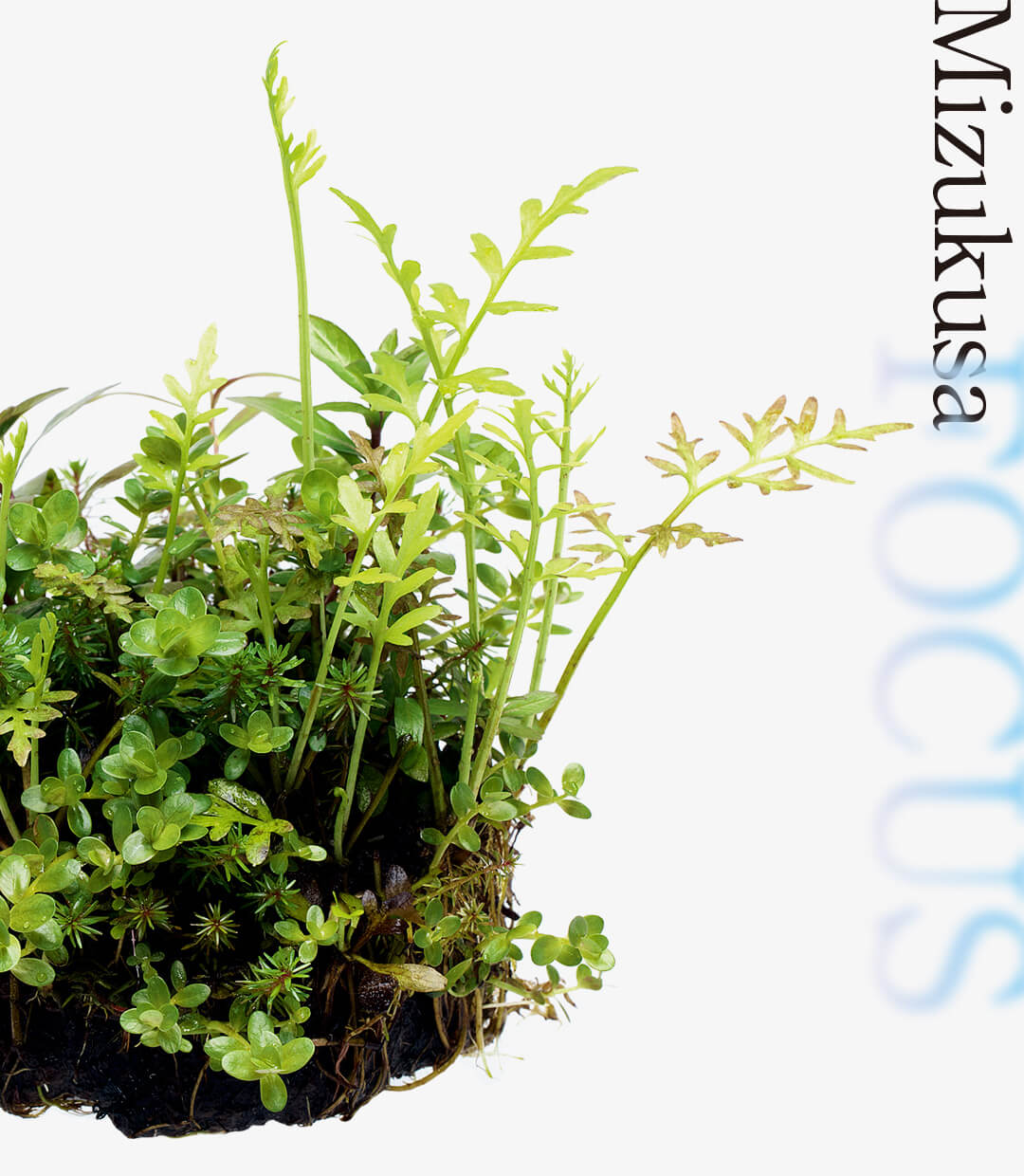Mizukusa FOCUS ‘Let’s take a close look at Lagenandra!’
Do you know anything about this month’s featured plant, Lagenandra? In this article, we introduce Wabi-Kusa Lagenandra MIX and closely look at its growth.
Wabi-Kusa Lagenandra MIX has three color variations
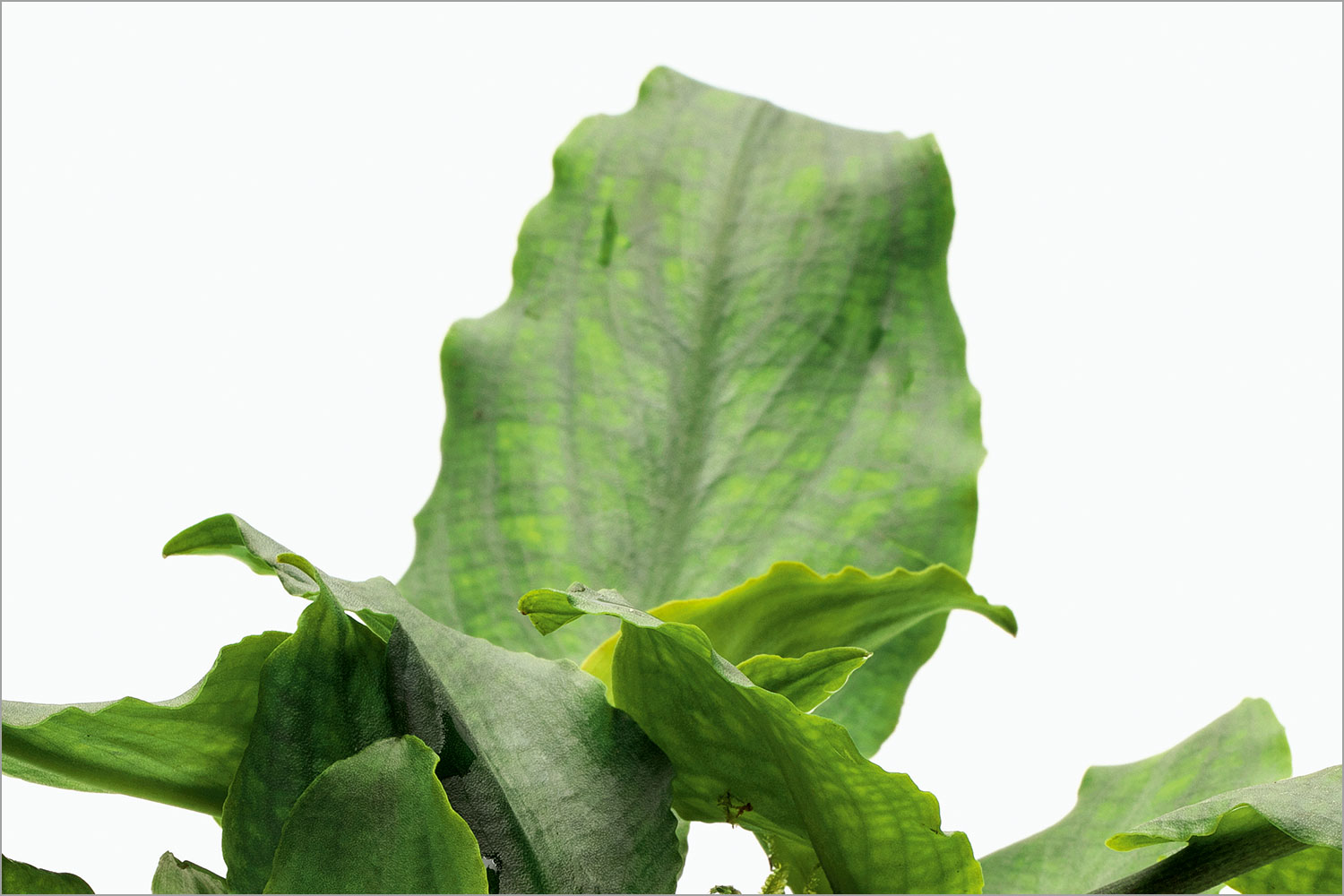
Green colored Lagenandra
L. meeboldii ‘Green’ develops its leaves laterally and the petioles turn brown as it grows. It usually produces offsets adjacent to the parent; you can enjoy watching them grow together with a single piece of Wabi-Kusa.
L. meeboldii ‘Green’ develops its leaves laterally and the petioles turn brown as it grows. It usually produces offsets adjacent to the parent; you can enjoy watching them grow together with a single piece of Wabi-Kusa.
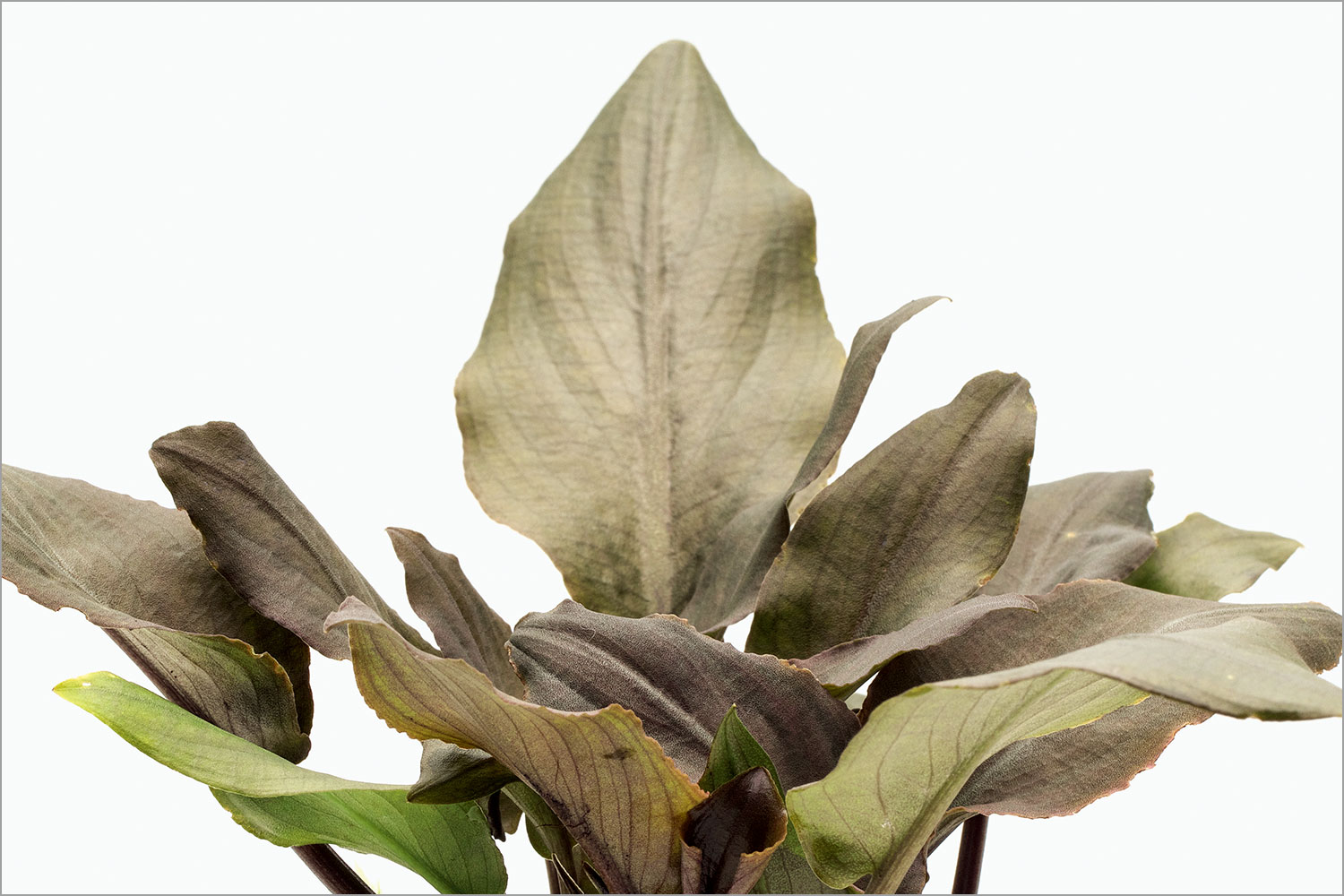
Red colored Lagenandra
The leaves of L. meeboldii ‘Red’ radiate from the center stalk as if covering the base of Wabi-Kusa. When the leaves become too dense, it is important to remove some of the lower leaves to keep them from getting soggy and shading carpet plants.
The leaves of L. meeboldii ‘Red’ radiate from the center stalk as if covering the base of Wabi-Kusa. When the leaves become too dense, it is important to remove some of the lower leaves to keep them from getting soggy and shading carpet plants.
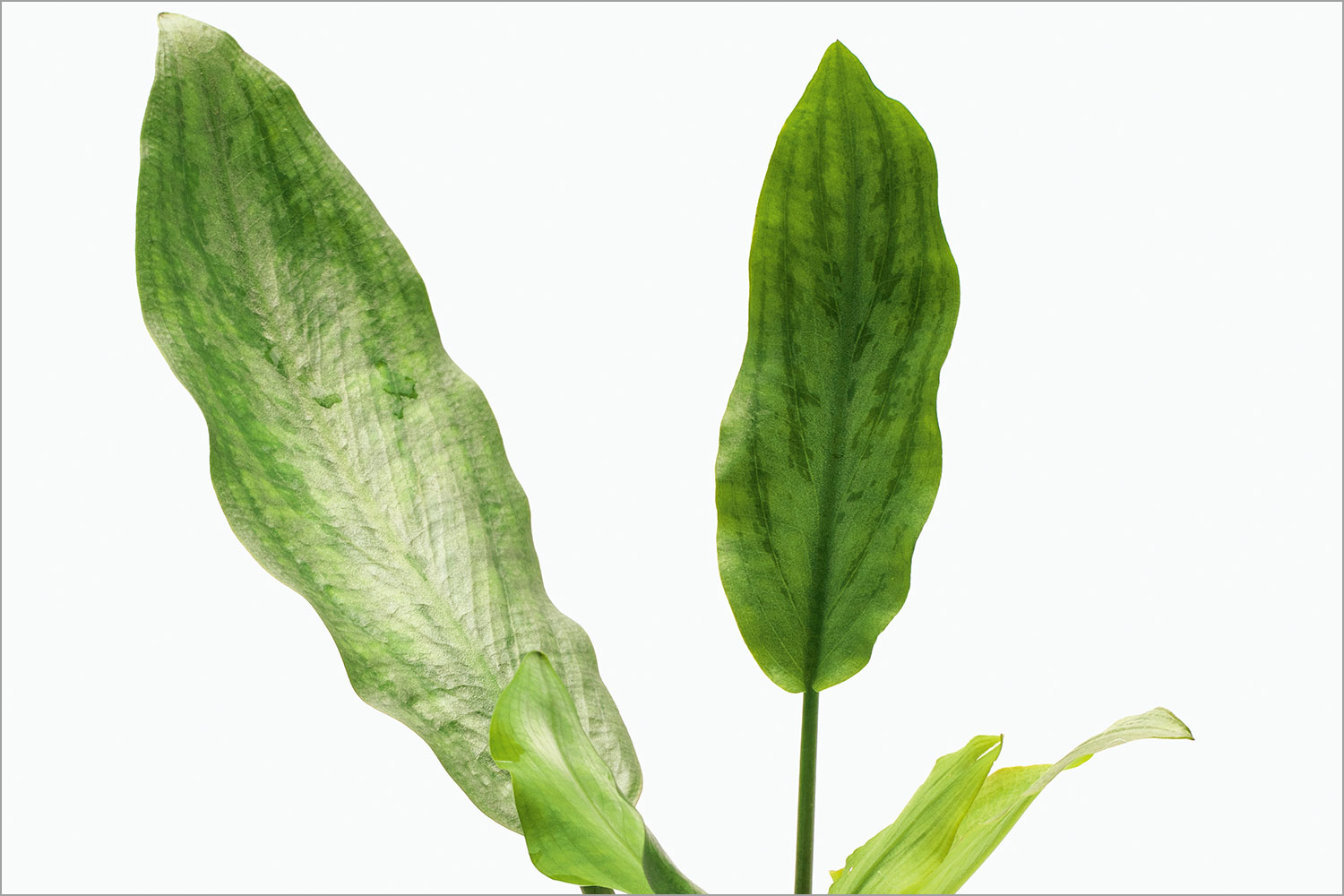
Variegated Lagenandra
It offers patterns like oxidized silver on its light green leaves. It is worthwhile to consider planting this mid to large-size plant as it allows the long leaves to grow and spread healthily.
Wabi-Kusa Lagenandra MIX with other Lagenandra species may be produced depending on available species.
It offers patterns like oxidized silver on its light green leaves. It is worthwhile to consider planting this mid to large-size plant as it allows the long leaves to grow and spread healthily.
Wabi-Kusa Lagenandra MIX with other Lagenandra species may be produced depending on available species.
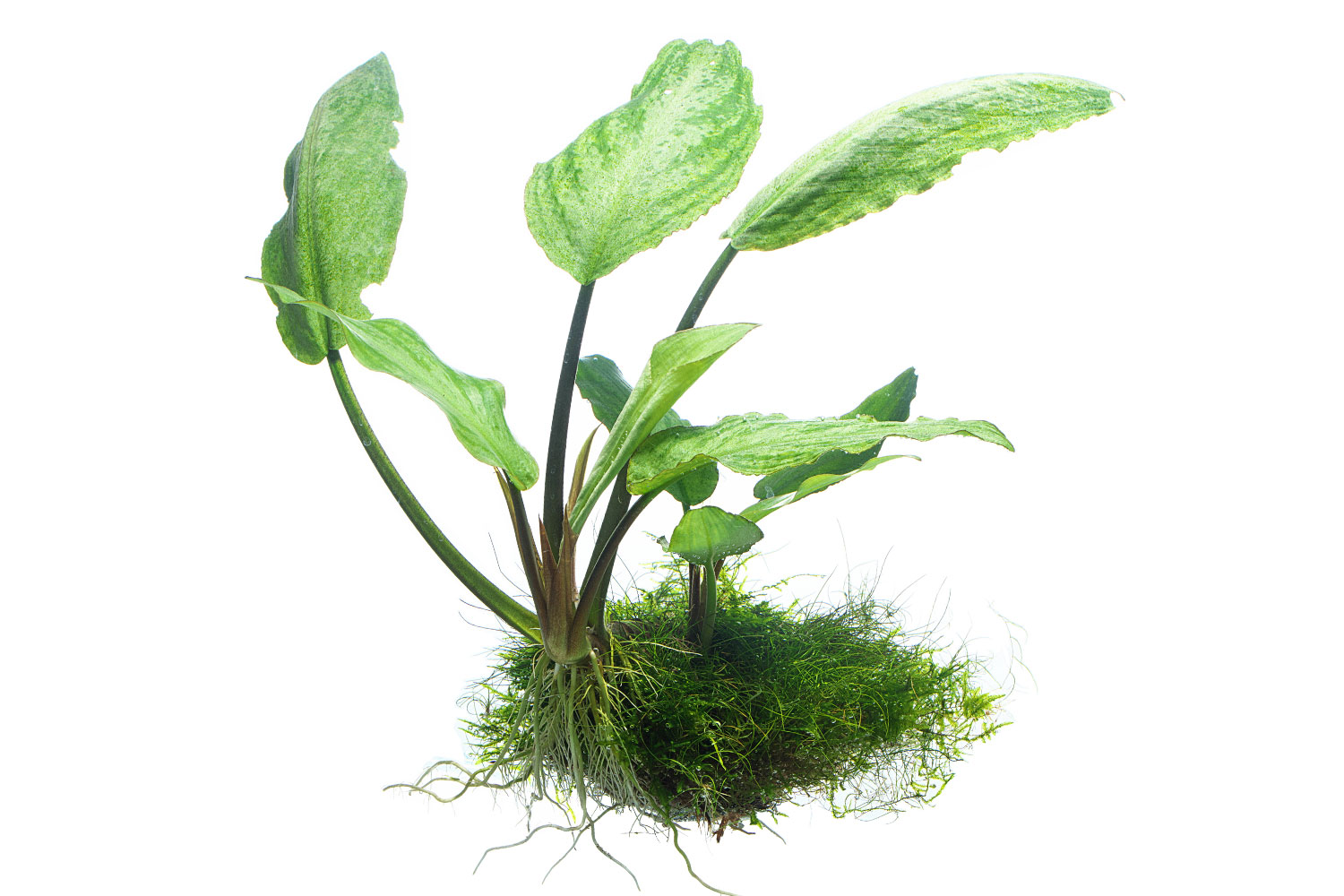
Wabi-Kusa Lagenandra MIX (Lagenandra sp. Silver) grown submersed for 2 months
Wabi-Kusa Lagenandra MIX is made up of a combination of a main plant and carpet plants like Taxiphyllum barbieri, Eleocharis acicularis and Utricularia graminifolia. As can be said of all the “MIX” type Wabi-Kusa, the plant that best matches the conditions of the growing environment becomes dominant. In this photo, T. Barbieri is growing well, followed by E. acicularis. If you want to let Utricularia graminifolia grow more visible under these conditions, it is necessary to reduce their volumes by thinning them out.
Wabi-Kusa Lagenandra MIX is made up of a combination of a main plant and carpet plants like Taxiphyllum barbieri, Eleocharis acicularis and Utricularia graminifolia. As can be said of all the “MIX” type Wabi-Kusa, the plant that best matches the conditions of the growing environment becomes dominant. In this photo, T. Barbieri is growing well, followed by E. acicularis. If you want to let Utricularia graminifolia grow more visible under these conditions, it is necessary to reduce their volumes by thinning them out.
ADA’s Lagenandra is produced not only with Wabi-Kusa, but also the BIO Mizukusa no Mori and LC Cup products. Give a try on these unique and attractive Lagenandra!
